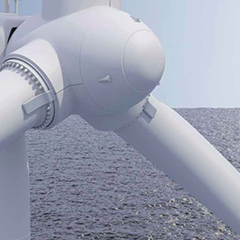A precious resource, water is one of the EU’s most valuable commodities. And yet it is being used unremittingly throughout the continent, with up to 40% consumption in power production alone. The EWEA has examined the situation and offers a credible alternative – wind energy, which uses little to no water…
Water is a precondition for life, an indispensable resource for the economy, and it plays a fundamental role for the climate. Each EU citizen consumes 4,815 litres of water per day on average, including direct water use (household consumption) and indirect water use (water required to produce industrial and agricultural products) (Vanham & Bidoglio, 2013). All these uses include energy production.
Water security is a major policy challenge: According to the OECD’s report ‘Water security for better lives’ (2013), 40% of the world’s population will face severe water stress conditions by 2050. Increasing water demand, water pollution and water stress will worsen water security in many regions worldwide. The OECD’s report called on governments to speed up efforts to enhance efficiency and effectiveness in water management.
At least 11% of Europe’s population had been affected by water scarcity by 2007, with the cost of droughts in Europe over the past thirty years at €100 billion, according to the European Commission. The main overall objective of EU water policy is to ensure access to good quality water in sufficient quantity for all Europeans, and to ensure the good status of all water bodies across Europe.
The EU’s Water Framework Directive aims to integrate more efficient use of water into broader European policies and strategies on energy, transport, agriculture, fisheries, tourism and others (Directive 2000/60/EC of the European Parliament and of the Council).
Of all the water used directly and indirectly in the EU, the highest amount – 44% – is used in power production primarily to cool thermal or nuclear power plants (EEA, 2009). Such plants are contributing to Europe’s water scarcity, and with more frequent droughts and the reduction of water resources in the south and east of Europe in the future, there will be an increasing need to minimise the European power sector’s water consumption.



























